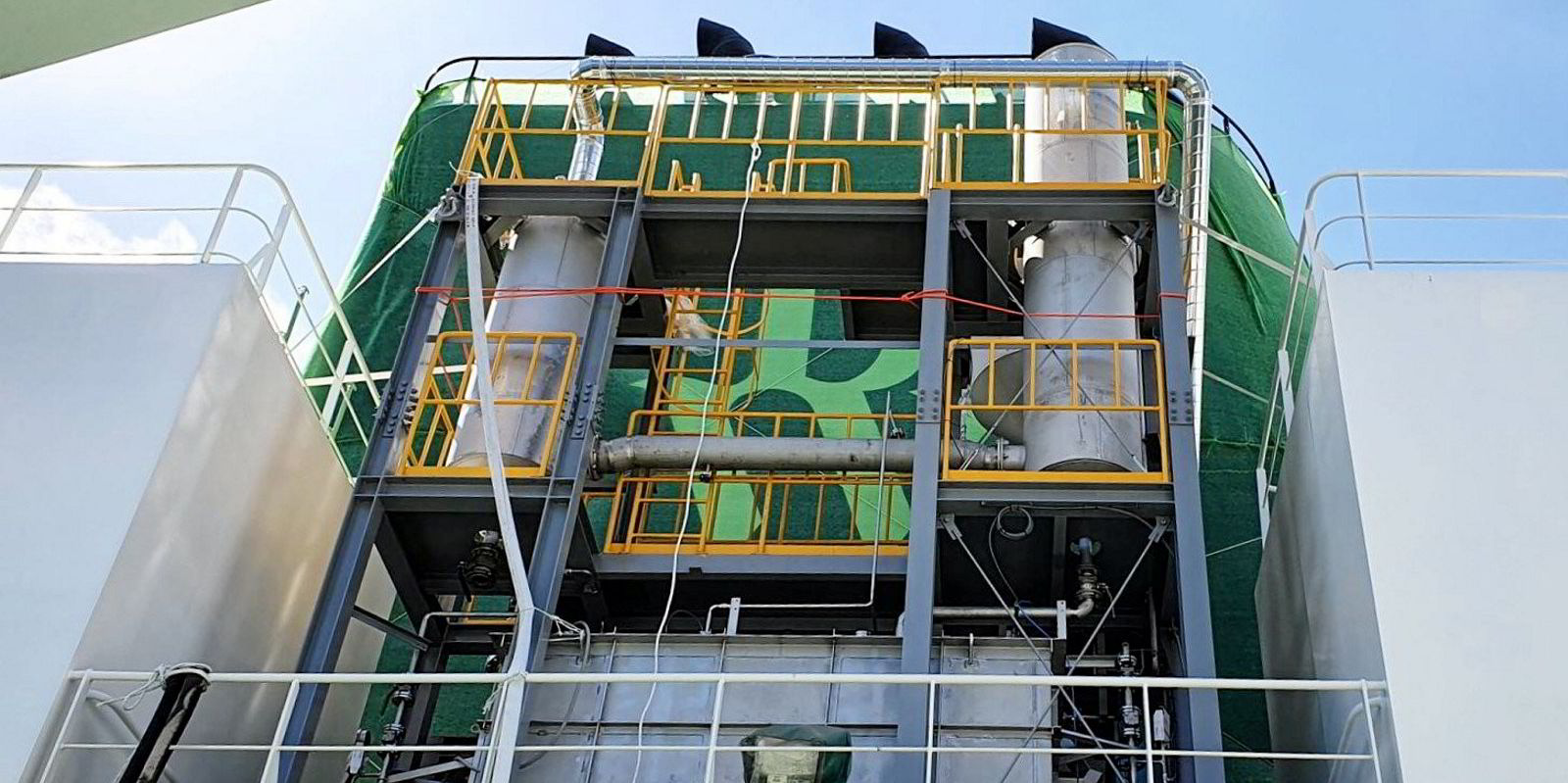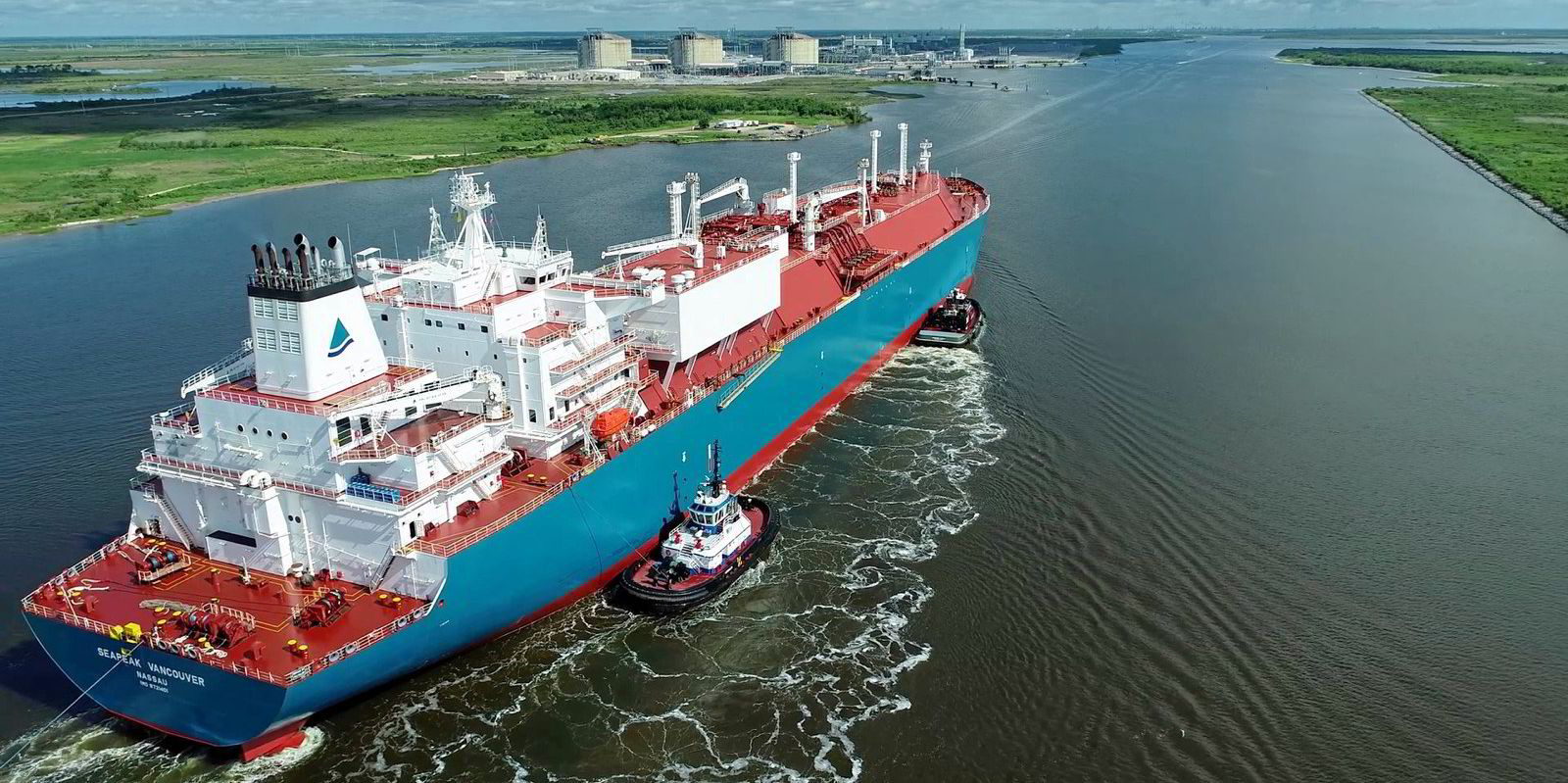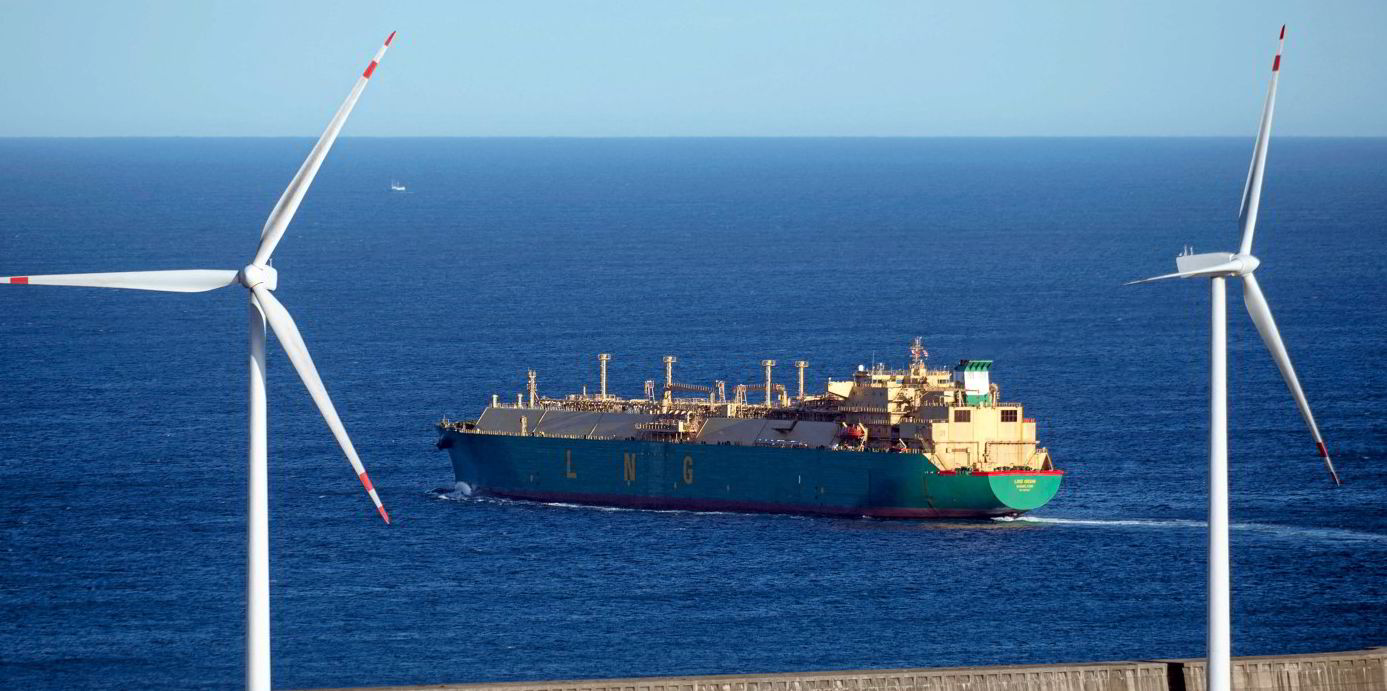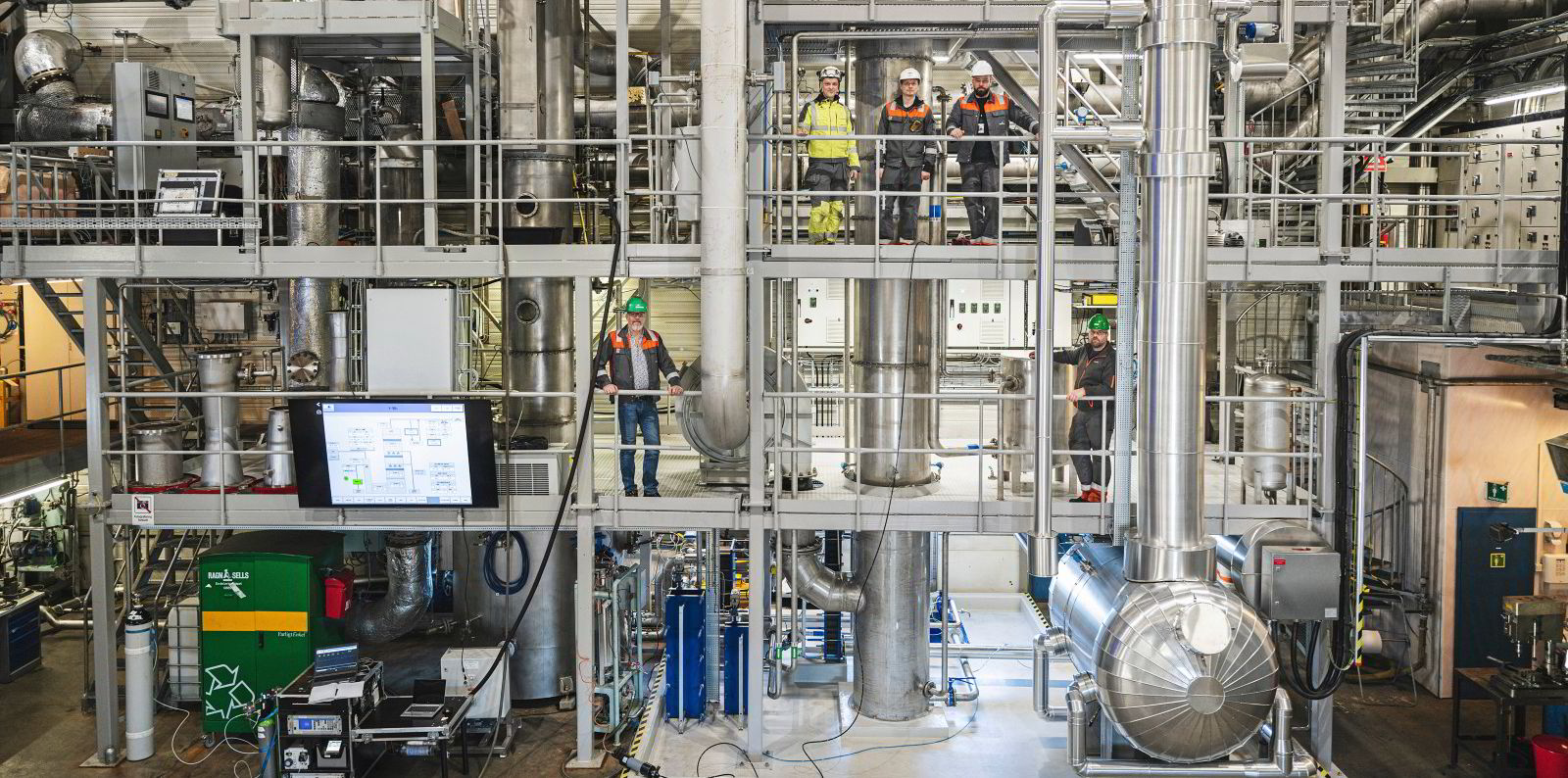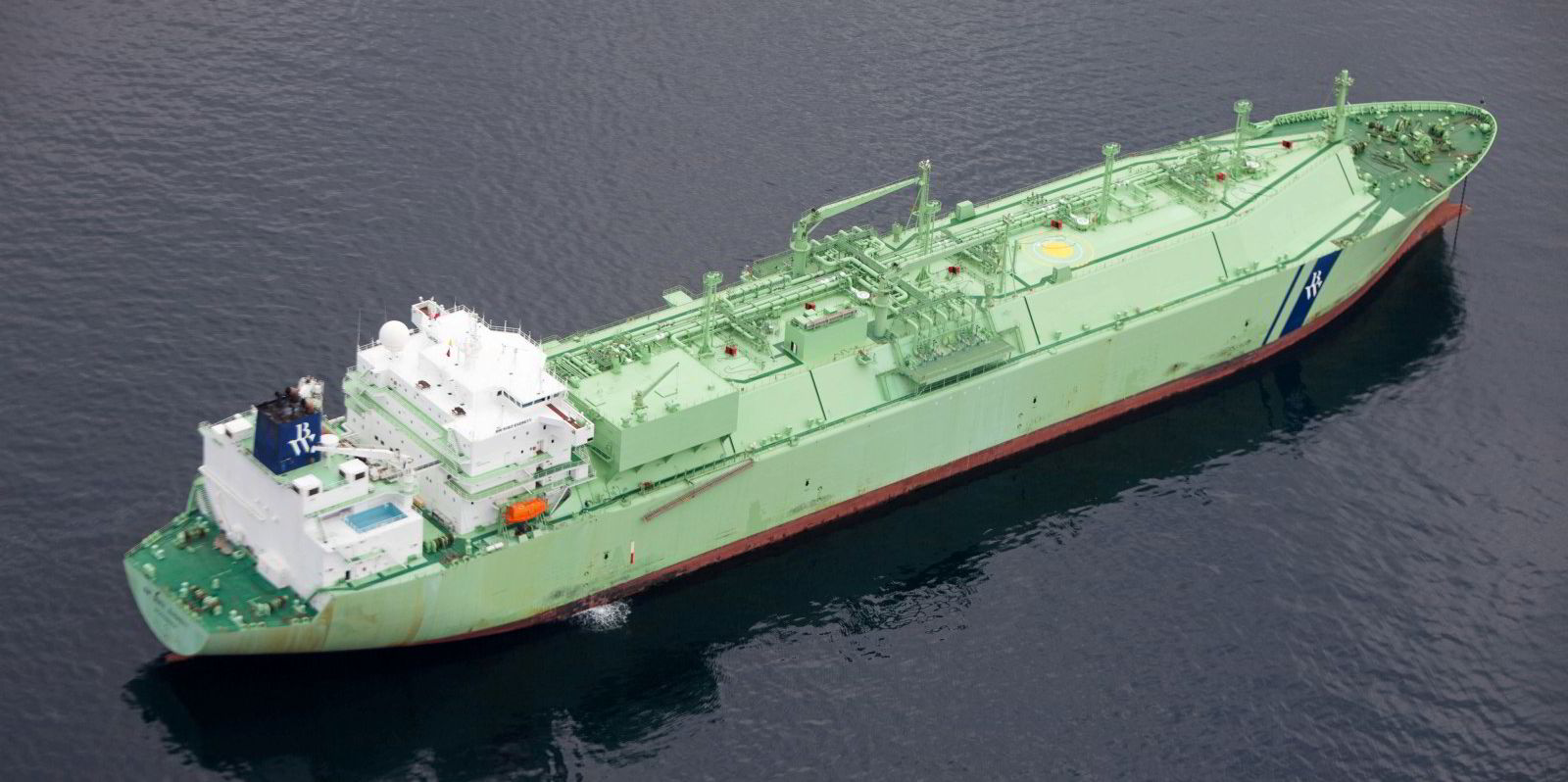Onboard carbon capture and storage (OCCS) is being touted as a technology that could become standard on the LNG carriers of the future.
The vessels lend themselves to the technology in that they predominantly burn gas as a fuel, which has fewer impurities than a compliant fuel oil alternative where the exhaust gas would need cleaning before being put through an OOCS unit.
LNG carriers also have more above-deck space to accommodate the unit than ships where cargo capacity is at a premium, and crews are more experienced in handling liquefied gases.
BW LNG is one of a handful of LNG shipowners — Seapeak and GasLog are also testing systems — that has taken an early look at the technology, trialling a system on one of its newbuildings, the 174,000-cbm BW Cassia (built 2022).
Serge Schwalenstocker, BW LNG head of newbuilding and new technology, explained that the vessel’s builder Hanwha Ocean, then Daewoo Shipbuilding & Marine Engineering, and technology collaborator Hi Air Korea Co, proposed testing an early-stage version of the equipment.
“We will contribute wherever we can to develop technology that can reduce our climate footprint,” he said. “OCCS is a potential tech that can help us move in that direction and lower our greenhouse gas footprint.”
Schwalenstocker said for Hi Air it was an opportunity to test its concept outside the lab on a realistic exhaust gas composition with the complexities of a marine environment.
The equipment was placed on the casing of the funnel and tied into the main engines’ exhaust line with a portion of the exhaust from one of the ship’s two main engines fed into the OCCS system.
Schwalenstocker said the size of the kit looks large for what was captured but stressed that the oversizing allowed different pieces of equipment to be tested to see how they worked together.
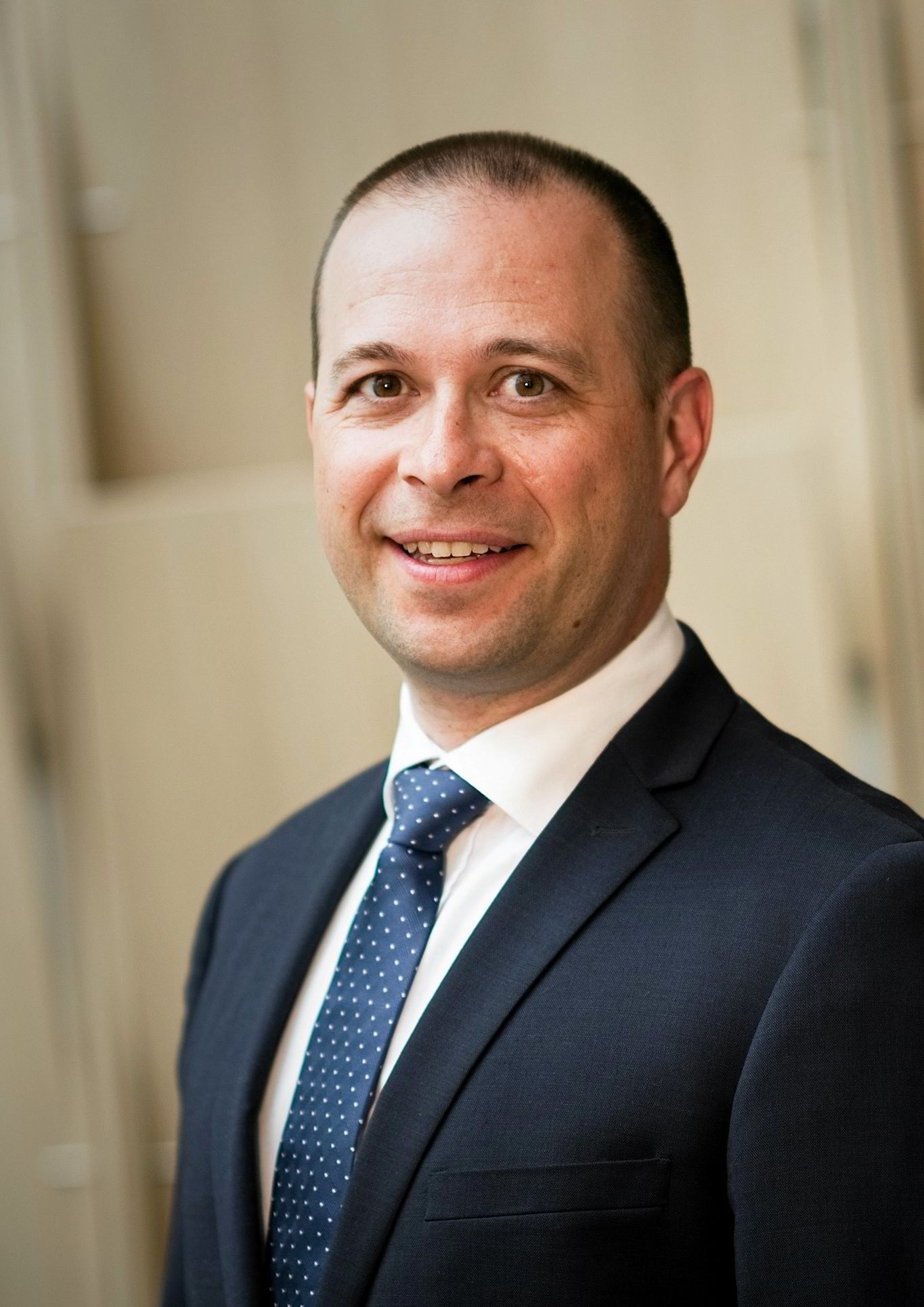
The system was intended to capture about 50 kg per hour of CO2 and Schwalenstocker said it “overperformed” in all the conditions.
To put this into perspective, he said a modern LNG carrier sailing worldwide at typical speeds will consume about 60 tonnes of LNG per day or 2.5 tonnes per hour and emits about seven tonnes or 7,000 kg of CO2 per hour.
So the system captured about 100th of the hourly CO2 emissions. But Schwalenstocker said the trial showed that the chemistry of the system worked while also revealing the weak points in the system, which is still under development.
Hi Air’s next step is to size the equipment to show what a one-tonne-per-hour capture system looks like.
Schwalenstocker, who is a naval architect by training, explained that Hi Air’s system uses lime which, when combined with other chemicals will react, bond with the CO2 and form calcium carbonate. The result is a stable solid which is basically shell sand.
The challenge is to find a large enough source of lime, he said.
BW LNG — the BW Group is a founder member of the Global Centre for Maritime Decarbonisation — is being approached by many technology providers, Schwalenstocker said.
He said the bulk of the OCCS systems under development use so-called carbon looping. In this, a mix of amines and water is sprayed onto the exhaust which bonds to the CO2.
Schwalenstocker described the amines as acting like a sponge, which needs to then be squeezed out. This is done by heating up the product and it is the efficiency of that process — that consumes more energy on board — which currently is one of the key research and development topics in this sector.
The concentrated CO2 produced then needs to be liquefied on board and stored in pressurised tanks before being offloaded for storage ashore.
On the cost of OCCS, the newbuilding and technology chief said this comprises three elements — the cost of capturing the CO2, storing it on board — which could entail liquefaction and specialised tanks and the price for discharge — and onshore storage.
“When you piece all these three together, you get a full cycle cost of what it takes to capture CO2 from a ship and never put it into the atmosphere,” he said.
But at present, Schwalenstocker said the industry only has a rough idea of the carbon capture cost on board, which BW LNG sees as ranging from between $50 and $200 per tonne of CO2 captured.
On board liquefaction, storage, energy consumption and final disposal ashore will add to the figure.
LNG carriers trade worldwide and there is no global CO2 storage market yet, he said, explaining that the pricing is still very project specific.
But Schwalenstocker pointed to “an interesting aspect” to OCCS technology.
“With onboard carbon capture, the climate downside of higher energy consumption is reduced and only the cost disadvantage remains.”
He said that with incoming carbon regulations and taxes that is on its way to being levelled out.
“We usually look at higher [energy] consumption having a climate impact but this is higher consumption for carbon capture. Climate disadvantage is at least heavily reduced.”
Schwalenstocker said BW LNG has not put a preference on any OCCS technology as the company sees that it is still at the development stage.
“It takes quite a bit of runway still before we have wide-scale commercialisation of OCCS. It is still dominated by R&D and there are a vast range of techs,” he said.
“In theory, we could go out and buy something and put it on, but we don’t see the shelf product yet. In a world where ships are a commodity, we do also rely on shelf. We can’t be all F1 every day.”
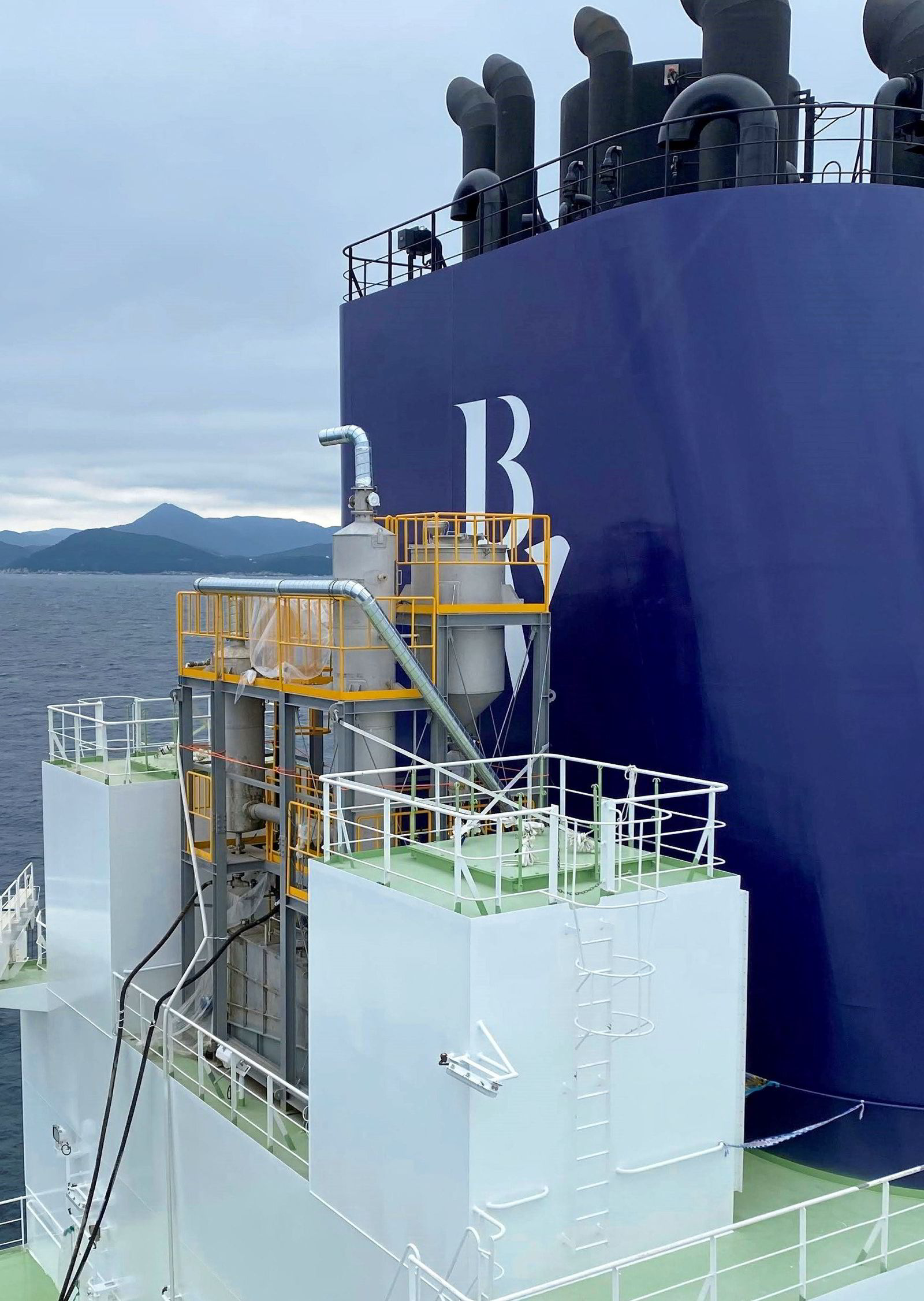
Schwalenstocker said there is now a race to improve the efficiencies of OOCS systems.
He is reluctant to say when the technology will be rolled out commercially, saying there are too many unknowns at present.
Improving vessel efficiencies remains key as this will in turn cut the amount of CO2 needed to be captured on board, he said.
“Our efforts to improve efficiency in equipment and operations is an important part of making OCCS a viable solution.
“When it is a shelf and viable product, and we can see the full picture — how to capture and store it on board and on shore — when those three building blocks are available to us, we will support them coming to life.
“From a tech side, for us the most important thing is that we will be ready.”
